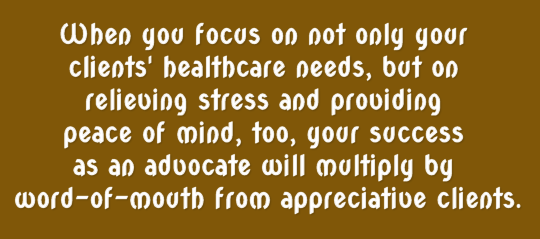Readers of this blog may remember that my husband and I have been in the process of moving – from Upstate NY (where they had 40 inches of snow last week!) to Central Florida. (No, no snow here so far 🙂 )
Moving is a bear – there are no two ways about that. Ours took place in two stages: first to a rental house, putting 75% of our household goods into storage. Then Stage Two, this past week, moving into our newly built home, bringing our goods out of storage. Now, of course, we’re trying to make our way through all those boxes, put everything away into its new place, learn to live in a new space, dig through the chaos that any move entails, all the while wailing “This is the last move! No more! Too much!”
Many of you have been there, and done that.
As I did during the early part of the move last spring, I’m going to share with you a couple of lessons gleaned along the way of the move because they are about working with people – the bread and butter of any advocacy business. They are so important, they can make or break your business.
The moving business is a service business, just as advocacy is a service business. Moving is extremely stressful just as any healthcare challenge is stressful. That makes it incumbent upon any service provider who supports clients going through stressful events (from advocates and medical providers to movers) to make stress relief part of their jobs.
The basics of stress relief are communications and consistency. You have to do the work, and you have to do it well and correctly, of course. But if you can’t communicate effectively, manage expectations, or be consistent, well – you are shooting yourself in the foot. Lack of those basics will undermine your success.
I would never again hire The Mover who moved us from New York to Florida. The reasons provide some excellent lessons for today’s post.
I’ll begin by sharing the two things he did well, and right.
- He showed up to load the truck in New York on the right day making sure we were out of our house on time.
- We have found only a small handful of things that are broken. (That’s a biggie.)
But the overall experience was horrible – just horrible. And that’s where we go next, beginning with bad communication:
About two months before the move, we contracted with The Mover. He told us that once the van was loaded, he would drive directly to our rental home in Florida. He gave us a specific date of arrival, seven days later. So for the actual travel time, I packed 10 days’ worth – a bit of fudge factor.
In addition, I packed everything we knew we would need for living six months in the rental house. I labeled it all carefully, like “Rental – Kitchen”, or “Rental – Office” so it would be clear which things did get moved into the rental, and which did not. Clear labels, and set aside from our other goods – there was no question what was what.
You can guess the rest. As he finished loading the van in New York, he told my husband, “Oh! by the way! I’ll be a little delayed getting to your rental in Florida. I’m going to pick up another load on my way, so it will be about three weeks before I get there.”
ARGHGH! I had not packed for three weeks, and everything additional I needed was already on the truck.
OK – I could pull up my big-girl panties and just roll with it. I was angry, exhausted, and more than a little stressed out – but – what was I going to do?
Three weeks later The Mover finally arrived with our stuff. The well-labeled boxes and goods were delivered to the rental, and everything else got packed into the storage space.
Not.
As it turns out, more than a dozen boxes, ranging from office materials to kitchen goods — things that were clearly marked and supposed to be delivered to the rental house — were not. They ended up in storage and could not be retrieved, because the storage space was so full and well-packed, that unless something was right at the door, it was not retrievable.
It was an expensive mistake. Those things had been labeled for delivery to the rental because they are things I use every day in my work, that we use regularly in the house, or because they could not withstand storage. That meant, since they ended up in storage anyway, that they had to be duplicated. We are now the proud owners of everything from an extra blender and two pizza cutters to extra containers of expensive spices. It also meant we had to throw away some of the food that could not survive the hot-hot-hot storage in Florida.
My anger, frustration, and stress were multiplied, with constant reminders every time we had to purchase a duplicate over the course of those six months.
 Now fast forward to this past week of trying to unpack all those boxes The Mover had packed. The man is diabolically inconsistent in his packing. There are at least a dozen boxes labeled “kitchen” (and nothing else.) And yet, so far I have unpacked 12 of them, finding only two drinking glasses, one in each of two boxes. We have found six of our dinner forks, in four different boxes. Six more are still missing. (Tell me why dinner forks can’t all be packed in the same box?) And some of what’s found in the “kitchen” boxes aren’t kitchen items at all, including stuff pulled from bedrooms and the living room.
Now fast forward to this past week of trying to unpack all those boxes The Mover had packed. The man is diabolically inconsistent in his packing. There are at least a dozen boxes labeled “kitchen” (and nothing else.) And yet, so far I have unpacked 12 of them, finding only two drinking glasses, one in each of two boxes. We have found six of our dinner forks, in four different boxes. Six more are still missing. (Tell me why dinner forks can’t all be packed in the same box?) And some of what’s found in the “kitchen” boxes aren’t kitchen items at all, including stuff pulled from bedrooms and the living room.
Now – don’t tell me this is what moves are like, because this isn’t my first moving rodeo. I’ve made 10 cross-country moves, and this house is the 15th house I’ve purchased (yes, you read that correctly). I know moving. I’ve had some bad moves! But this isn’t what it needs to be.
So – you’ve put up with this entire, ongoing whine. It’s time to make a useful point.
As service providers, as advocates, one of our most important goals in working with our clients should be to relieve stress – certainly not create more. It’s an important part of our service delivery to communicate well (manage expectations accurately) and to be consistent. Be sure clients understand everything you do as you go along, remembering that what seems understandable to you may NOT seem so to your client.
As you work alongside your client, ASK for input. Keep the door open for clients to discuss stress levels with you so you can take steps to alleviate them.

When you focus on not just your clients’ healthcare needs, but on relieving stress and providing peace of mind, too, your success as an advocate will multiply by word of mouth from appreciative clients. That’s the best kind of marketing.
OK – enough whining. I’m going to go unpack the box that says Shoes. I’m hoping to find the rest of my forks.
LEARN ABOUT APHA MEMBERSHIP | FIND MORE REASONS PATIENTS NEED ADVOCATES






Trisha
I think you are the only one I know that can go through
a challenging situation ,bring humor and lessons that could relate to any life change . In addition have the advise
connected to your professional role . Your writing style brings smiles and head nodding.. yes…..and always the awesome voice” of Trisha.
Maybe your shoes will actually be in there..
I wholeheartedly agree with Nancy! I agree with how important stress relief and communication are for our clients. I have found time and time again, good, consistent, communication relieves stress. My clients comment how much basic communication helps them. I ask in the initial, contract signing stage, how the family would like to be contacted with updates. With technology there are so many options. I usually send a copy of my daily visit log notes and ifollow up with a phone call to answer any questions. Every family is different. I’ve found giving them options is the first step to provide much needed stress relief.
I too hope you find your forks!